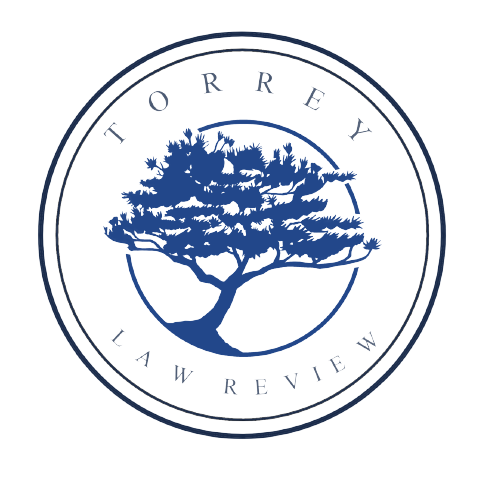Snyder V. Phelps
Introduction:
Among the rights guaranteed to the citizens of the United States by the First Amendment is the right of free speech in matters of public issue. While the government cannot ban this right, it may place reasonable restrictions on its exercise. The issue in Snyder v. Phelps, 562 U. S. 443 (2011) was whether a protest at the funeral of a deceased Marine was protected speech under the First Amendment’s Free Speech Clause. In the U. S. Supreme Court’s decision, they considered whether the subject matter of this protest was a public or a private issue.
Facts:
The family of Marine Lance Cpl. Matthew Synder, a Marine who was killed in the line of duty in Iraq, filed a lawsuit against Fred Phelps and The Westboro Baptist Church for picketing at their son’s funeral. The funeral was held at a Catholic Church in Westminster, Maryland. The Church members, including two of Fred Phelps’s daughters, traveled to the funeral site. They held up signs at three different locations adjacent to the Catholic Church. Some of the signs read “Fag Troops,” “Thank God for dead soldiers,” “Thank God for 9/11,” and “America is doomed.” Arguably, some of the signs might be deemed profanity. It makes no difference whether the profanity used was verbal or non-verbal. The First Amendment protects all speech. If the protest took place on private property, then there is no First Amendment protection. The picketers never stepped foot on Church property. The Synder family accused the Church of five state tort law claims: defamation, publicity was given to private life, intentional infliction of emotional distress, intrusion upon seclusion, and civil conspiracy.
Legal Background:
Prior to the trial, Phelps made a motion for summary judgment on Synder’s complaint. The judge ruled in favor of Phelps on the causes of action for defamation and publicity given to a private life. The remaining three causes of action went to a jury trial. The jury found in favor of Synder on the three remaining causes of action. Phelps was ordered to pay Synder $2.9 million in compensatory damages and $8 million in punitive damages. Phelps appealed the district court’s judgment.
The basis of his appeal was that all of the activities connected to the protest by members of the Westboro Church were protected by the First Amendment. The Court of Appeals examined the picket signs and found them to be entitled to First Amendment protection. The Court of Appeals reasoned that the protest was a matter of public concern, not provably false and the language used was exaggerated speech. The Fourth Circuit Court of Appeals reversed the District Court’s decision. Phelps was successful in his appeal to the Fourth Circuit Court of Appeals. Synder then appealed the Fourth Circuit Court of Appeals’ decision.
Holding:
The Supreme Court affirmed the decision of the Fourth Circuit Court of Appeals. The Supreme Court held that the Free Speech Clause of the First Amendment protects the right of Phelps and his church from state tort lawsuits. More specifically, the First Amendment shields those who stage a protest from civil liability. In this case, the Supreme Court made a determination that Phelps and his church were engaged in a matter of public concern and not a private concern. In Justice Stephen J. Breyer’s concurring opinion, he agreed with the majority decision as to the picketing activities only. It seems that Justice J. Breyer would not have agreed with the majority if the opinion had included statements on the church’s website. He stated, “I do not believe that our First Amendment analysis can stop at that point.” The Supreme Court held 8 to 1 in favor of Phelps. Justice Samuel Alito filed a dissent, in which he argued: “Our profound national commitment to free and open debate is not a license for the vicious verbal assault in this case.”
Legal Analysis:
In deciding whether the Court will extend the protection of the Free Speech Clause of the First Amendment, the Court must decide if the concern is a public matter or a private matter. In making this determination, the Court looks at the “ ‘content, form, and context of the whole record.’ ”
The U.S. Supreme Court held that the Free Speech Clause of the First Amendment protected the right of Phelps and his church to protest at the funeral. In deciding in favor of Phelps, the U.S. Supreme Court found that the (1) “content” of the signs concerned a public, not private, matter, (2) the “context” of the protest, even though it was staged near a private funeral, does not change from a public activity into a private matter and (3) the “form” of the subject matter of the protest was not explicitly directed at the deceased, Snyder or Snyder’s family.
The U.S. Supreme Court made the correct decision in this case because the First Amendment protects speech on public issues no matter how outrageous the speech. As the Supreme Court ruled in the case of Connick v. Myers “[S]peech on public issues occupies the ‘highest rung of the hierarchy of First Amendment values,’ and is entitled to special protection.”
Here, there is no question that the timing and location of Phelps’ protest was outrageous and of poor choice. Yet, given that the subject matter of the protest related to a public issue, the U. S. Supreme Court merely followed the precedent of Connick v. Myers. No matter how offensive speech is on a public matter, be it verbal or non-verbal, we must always protect a person’s right to free speech. In a free society, we should demand no less.
